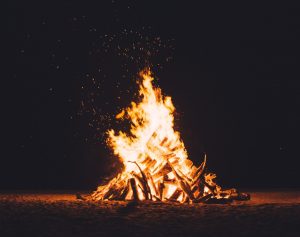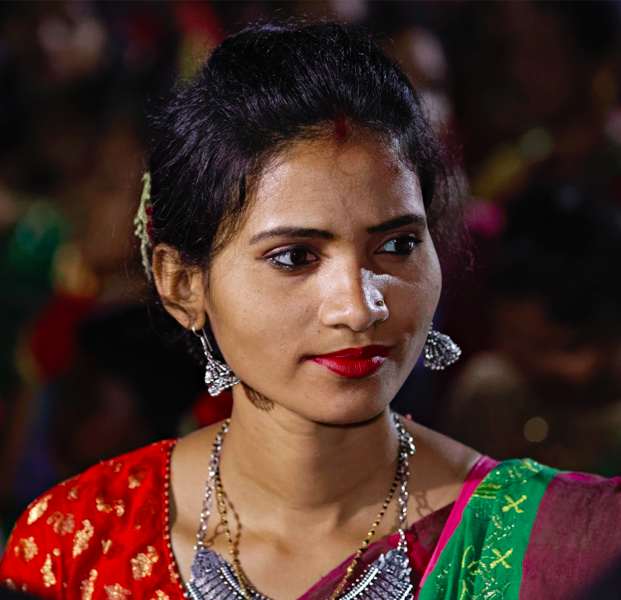Among the numerous Hindu festivals, Holi, the festival of colors, is the most vibrant and was celebrated on March 28th this year. Although Holi in its truest form is all about spreading laughter and love, crimes including sexual harassment, robbery and drug consumption have increased during the festival in recent years.
The myth of Holi
The most common and popular legend traces the roots of Holi to a demon named Holika. According to ancient mythology, Hiranyakashyap, the king of demons, proudly considered himself as invincible and demanded that everyone worship him as the only God. Hiranyakashyap’s son, Prahlad refused to obey his father’s commands and continued to worship Vishnu. Infuriated by his son’s disobedience the Demon King plotted to kill Prahlad, who then asked his sister Holika to help him with her magical fire-protecting cape. c . Holika tricked Prahlad to sit on a pyre with her while he prayed fervently to Lord Vishnu to save him. In answer to Prahlad’s prayers the protective cloak which was wrapped around Holika miraculously flew to Prahlad, covered his body and saved him from the fire whle the vicious Holika burned to death.
Holi celebrations – a rural-urban divide

Commemorating the victory of Good over Evil, the ritual of Holika Dahan is performed on the eve of Holi each year, where large bonfires are lit and prayers are offered to God. In Basantapur, Dabar Square in the Kathmandu Valley, the festival begins with the raising of a ceremonial pole decorated with colorful cloth strips . Devotees tie threads to the pole and offer prayers as they light oil lamps and the pole burns to ashes. The inter-personal splashing and smearing of colors takes place on the day after Holika Dahan.
In the Indian villages and the Terai region of Nepal, Holi begins with the tradition of people smearing each other with the sacred ashes from the previous night’s bonfire. Large groups of villagers then gather to playfully spray and smear each other with water and colorful powders. In rural India traditional folk music is a defining characteristic of Holi. As our Kitchen Garden supervisor , Satyendra Prasad points out, “In Bihar various types of folk music like Jhamta and Chaita are sung to welcome spring and celebrate the festival of colors.” In contrast, Holi in urban areas of Nepal and India has evolved from the simple joys of smearing colors onto each other and singing folk songs and now includes pool parties, Bollywood-style parties, water games, and colorful Rain Dances while celebrity DJs and renowned musicians give live performances.
Laisser la place aux femmes

With urban women enjoying more autonomy, Indian towns and cities witness a mix of men and women on the streets, playing Holi with equal gusto. In the peri-urban and rural areas the street celebrations are dominated by the men and children. Karuna-Shechen India’s Communications Officer, Anyesha Nandi shares her experience : “Being raised in a metropolitan city I was taken by complete surprise by my experience of Holi in Bodhgaya where I could hardly spot any woman celebrating the festival outdoors.” Women, particularly married ones, usually play Holi indoors with their family and close friends, while young girls may be allowed to play on the streets near their houses.
Although Holi in its truest form is about spreading laughter and love, in recent years the festival has unfortunately been impacted by an increase in crime, including sexual harassment, robbery and drug consumption. Many men make lewd comments, some molest women as they forcefully smear them with colors, some are under the influence of Bhang, (an edible form of cannabis) and others use the colored pastes to disguise their identity.while they take advantage of the festive fervor. Fear of harassment often compromises women’s mobility during the festival because the patriarchal society in which they live often justifies the men’s behavior while they claim that it is the woman’s responsibility to be more careful. Karuna-Shechen Nepal’s Communications Officer, Rojina Karmacharya says : “For me, Holi is still associated with the terror and constant fear that we had to face while walking to school during the festival, which is why I never like celebrating it”. This reflects the situation of women in a society in which their personal space and consent is not respected or valued as much as that of men
Holi, when played as it is supposed to be – in a safe and consensual manner – Holi is a festival unmatched in terms of its vibrancy, fun, mirth and happiness.
